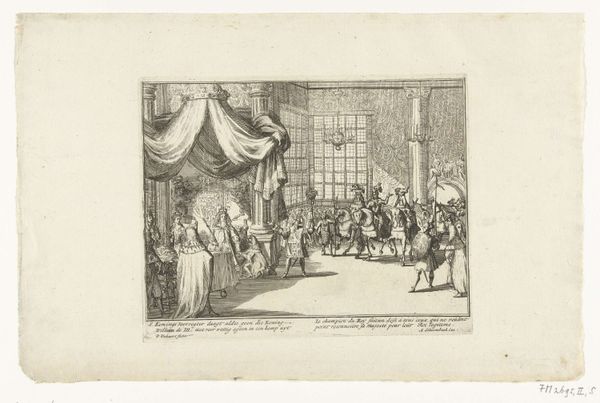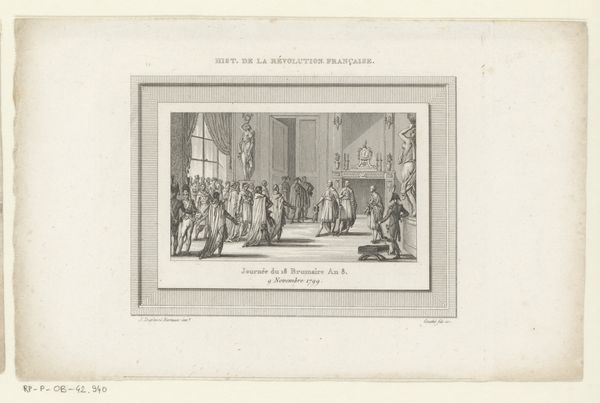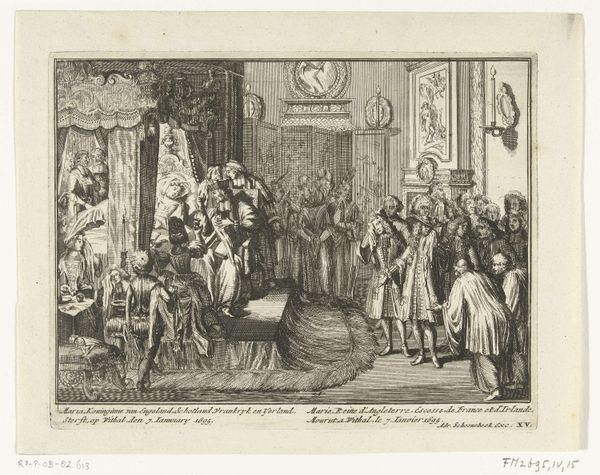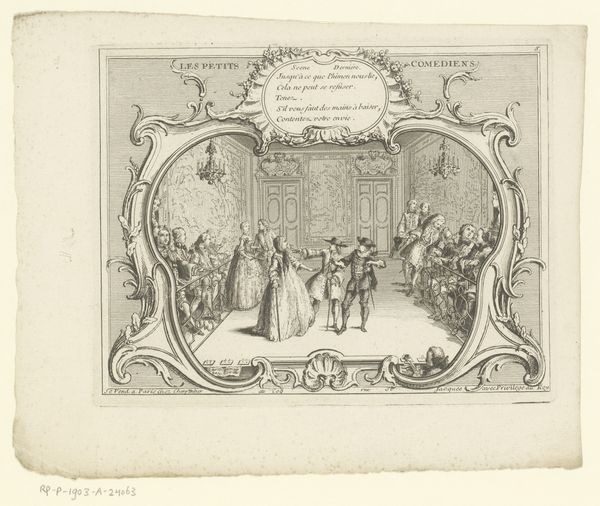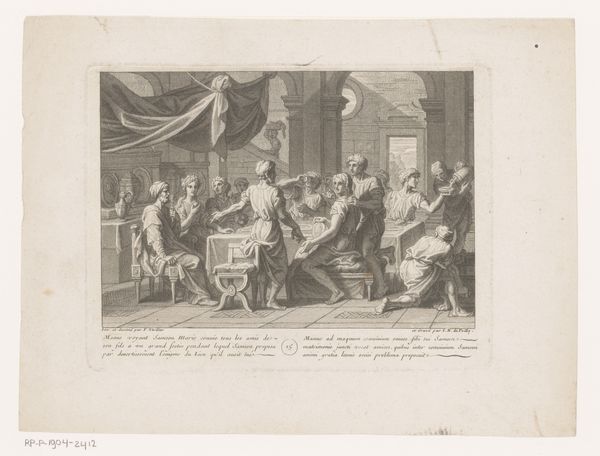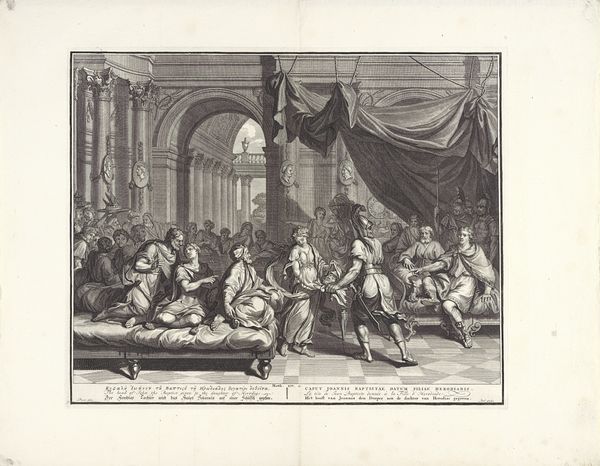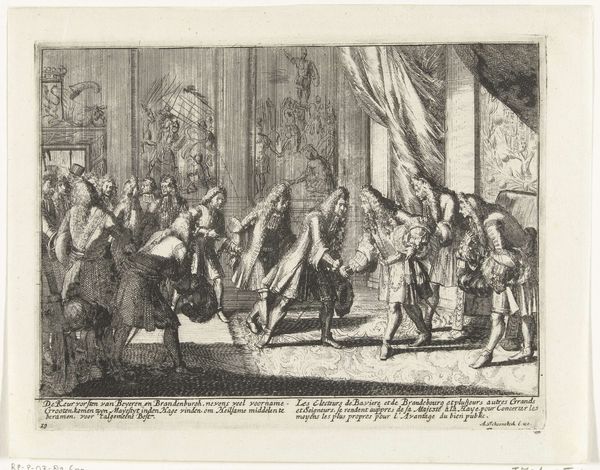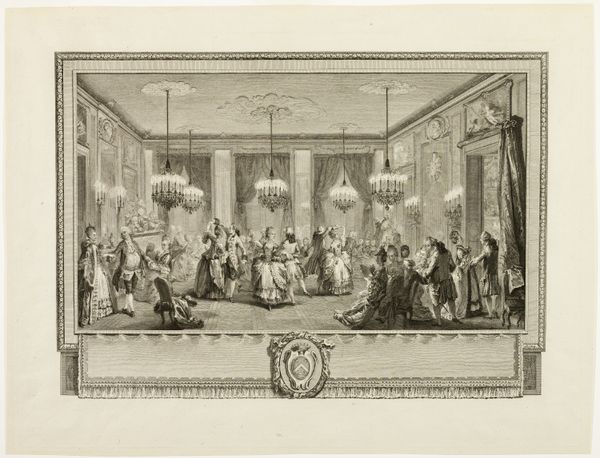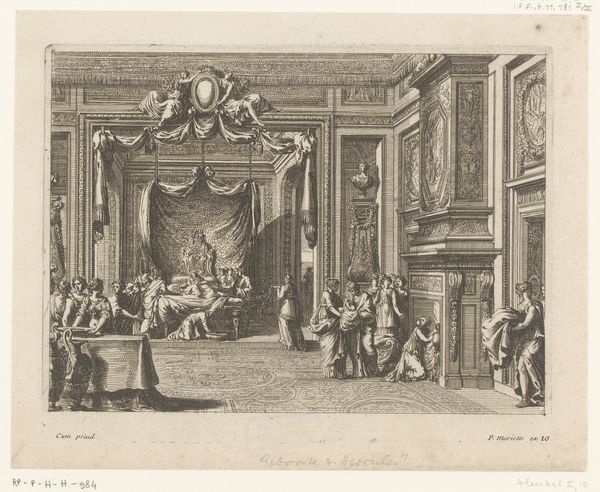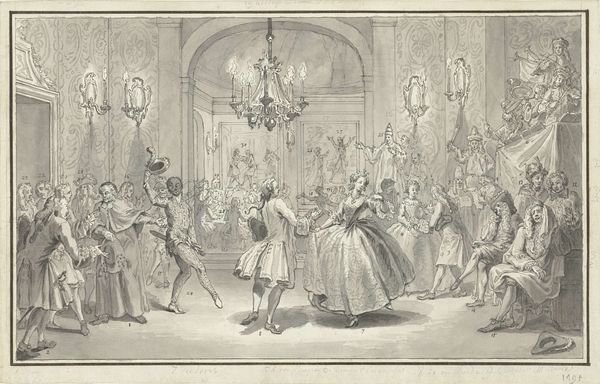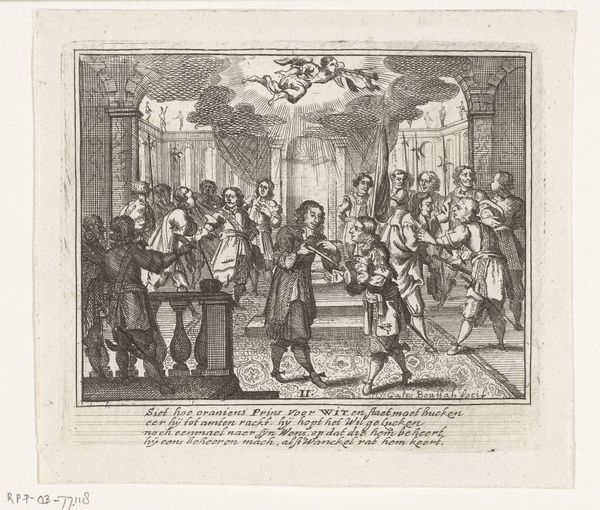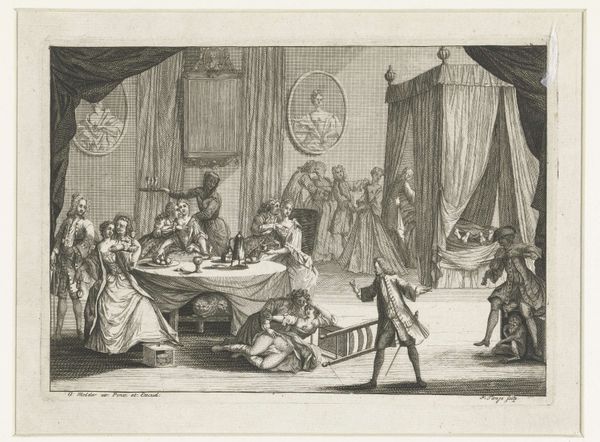
Ceremonie waarin de koninklijke kampvechter een ieder uitdaagt die de wettigheid van verkeizing van de koning betwist, 1689 1691
0:00
0:00
anonymous
Rijksmuseum
print, engraving
#
portrait
#
baroque
# print
#
figuration
#
line
#
history-painting
#
engraving
Dimensions: height 257 mm, width 301 mm
Copyright: Rijks Museum: Open Domain
Editor: This is a print called "Ceremony in which the Royal Champion challenges anyone who disputes the legitimacy of the King's election, 1689," created in 1691 by an anonymous artist. It’s a detailed engraving depicting a very formal scene, quite literally framed by an ornamental border. It looks incredibly staged, almost theatrical. What's your take on it? Curator: This print offers us a fascinating glimpse into the performance of power and legitimacy in the late 17th century. It depicts a specific socio-political moment: William and Mary's accession to the English throne following the Glorious Revolution of 1688. Notice how the setting itself – presumably a palace interior – is meticulously rendered to project authority and tradition. Editor: Yes, I noticed the architectural detail and how the monarchs seem slightly removed, literally elevated above the other figures. Who are these "champions," and what role did they play? Curator: The champion embodies the idea of divinely sanctioned rule, ready to defend the monarch’s right to the throne through trial by combat. It’s fascinating how this archaic ritual was employed even amidst evolving political thought. Think about what this imagery projects – a conscious effort to legitimize the new monarchs via traditional spectacle and symbolic power. Doesn’t that raise some interesting questions about political messaging? Editor: Definitely. It makes me think about how power is not only held, but also *shown* to be held. I guess the "performance" aspect makes the whole situation more credible, or believable, for the wider population at that time? Curator: Exactly. Prints like these circulated widely, shaping public perception. Consider its public role and how accessible it was to those who couldn't witness such events in person. How does understanding this change the way we look at it now? Editor: Thinking about it as propaganda adds another layer to what I see here. Thanks, that gives me a lot to consider! Curator: And it highlights how artistic choices and dissemination are deeply intertwined with historical events and social power. Fascinating indeed.
Comments
No comments
Be the first to comment and join the conversation on the ultimate creative platform.
